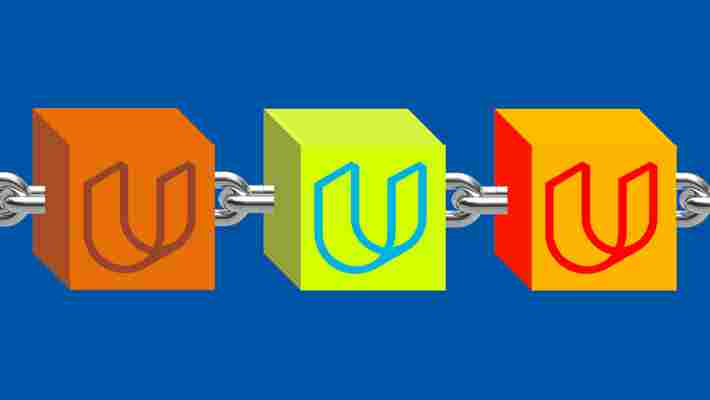Like it or not (and I don’t), Blockchain is the current hottest tech buzzword. Hundreds of products are being built around distributed ledgers, in fields as diverse as healthcare, finance, and even online gaming.

To ensure that more developers can jump on this bandwagon, learning platform Udacity has launched a blockchain nanodegree program, which promises to teach coders everything they need to know to work in this growing niche.
The course is spread over two three-month terms, and is focused on practical experience. According to Udacity, the course sees students build their own blockchain, learn about smart contracts using Solidity, the most popular language on Ethereum, and build a blockchain-powered web application.
It also allows students to learn from experts in the field. These experts include Adam Gall, the co-founder and CTO of DECENT, Brian Ho, a course instructor at Blockchain at Berkeley , and two software engineers at MadHive.
Before registering, you’ll want to ensure you’re comfortable with object-oriented programming, and have an understanding of how to build web applications with JavaScript.
Each term costs $999 (£799 in the UK). If you’re tempted, you can enroll today . The company has also launched a six-part Vimeo series about blockchain technology called Built On Blockchain . You can check the trailer out below.
Udacity is the latest in a line of educational companies launching blockchain initiatives. Already, there are several blockchain-based vocational courses being offered through coding bootcamps.
That’s hardly surprising. Blockchain developers earn a packet, partially due to the huge amount of VC and ICO funding sloshing around in the field, but also because there’s a relative scarcity of them.
For what it’s worth, Udacity’s course is pretty affordable, especially when you compare it to a traditional four-year college course, or a coding bootcamp. But before you stump $2,000 on the nanodegree, you should carefully evaluate if it’s really for you.
Blockchain is extremely hot right now, but it hasn’t really found its killer app. It’s still very much in buzzword territory.
Judging by the bulk of my email, people are taking existing ideas, appending “ … but on the blockchain ” to them, and hoping people will care.
Dropbox, but on the blockchain. LinkedIn, but on the blockchain. AWS, but on the blockchain.
Eventually, things will calm down. The madness will stop, and you can expect the job market to shift with it. There’ll be fewer positions, and they’ll likely be centered around a few rather conservative industries — namely finance and insurtech.
If that’s where you want to work, then this nanodegree is probably for you.
Report: Cryptocurrency hackers earned $20M with 51-percent attacks in 2018
Powerful attacks on blockchains are increasing. So far this year, hackers have effectively executed a minimum of five separate “51-percent attacks” on cryptocurrency projects, with profits amounting to almost $20 million.

This represents a remarkable increase in success, after renowned cybersecurity firm Group-IB recorded no completed 51-percent attacks last year.
Group-IB has just released the full version of its annual report on trends in high-tech crime , which it has shared with Hard Fork.
It showed that in 2018, hackers have pocketed $19.5 million worth of cryptocurrency and caused havoc for fledgling blockchains.
The report also revealed cryptocurrency hackers went on a veritable rampage between April and June of this year.
51% attacks guarantee free money
A 51-percent attack consists of (as the name implies) an attacker taking control over at least 51 percent of the overall mining power of a Proof-of-Work blockchain, which known as its hashrate.
“They can be either carried out by one miner with a large number of computers or a group of miners forming a mining pool,” Group-IB explains. “Control over 51-precent of the network power itself is not necessarily an attack — unless there has been intentional use of this advantage.”
An attacker controlling a majority of a blockchain’s hashrate can freeze the system, stop transaction verification, suspend mining, prevent other miners from verifying transactions, and the ultimate perk: double spending .
Double spending involves the creation of a hidden, alternative blockchain that 51-percenters can use to verify their own (fake) transactions. This often leads to hackers creating of large amounts of cryptocurrency out of thin air.
Presently, Group-IB notes double spending to be the greatest threat to Proof-of-Work blockchains.
“It is possible to double spend even without controlling this much network power,” clarifies Group-IB. “However, control over 51-percent is an absolute guarantee that the fraudster’s block is recognized as correct.”
Attackers earn $19.5M by targeting small cryptocurrencies
This year, hackers successfully attacked the altcoin Verge twice. Once in April, when a bug in its code led hackers to steal more than $1 million worth of cryptocurrency , and again in May, when hackers took over and refused to process transactions.
In a separate attack in June, unknown criminals siphoned $550,000 worth of ZEN cryptocurrency over four hours by controlling the ZenCash blockchain.
In the same month, a small-time cryptocurrency project called Litecoin Cash, also had to interrupt critical infrastructure needed to maintain smooth operation after hackers invaded its mining pools.
But the most lucrative of all the attacks this year was the crippling attack on Bitcoin Gold. In May, a malicious miner took captured a majority of the BTG hashrate, allowing them to send 388,000 BTG ($18M) directly to their personal wallet .
The fallout continued months later, with US-based exchange Bittrex delisting Bitcoin Gold with concerns for investor security, should the attackers return.
“ Cybercriminals can get high rewards and steal lots of money by attacking small and unknown cryptocurrencies,” a Group-IB spokesperson told Hard Fork. “It is just technically easier to compromise relatively unknown cryptocurrencies, which usually do not have the capacity for the rapid response necessary to stop the attacker converting stolen funds to a more stable currency.”
51% attacks aren’t cheap
There is actually a website that tracks just how much it would cost miners to conduct 51-percent attacks on the major cryptocurrency platforms.
In order for miners to execute the attack, they must first sacrifice the lucrative income the network normally rewards them with for legitimately processing cryptocurrency transactions.
In fact, Group-IB reports that the ZenCash attack, which netted $550,000 in cryptocurrency, cost the hackers at least $30,000 to prepare and carry out.
After all, the premise of the cryptocurrency mining industry rests on the incentives awarded to miners for maintaining the network outweighing the possible rewards that come with a successful 51-percent attack.
With that in mind, according the site, it currently costs just over $520,000 to take control of the Bitcoin network for a solid hour, and only $150,000 to bring Ethereum to its knees for the full sixty minutes.
For smaller cryptocurrency projects to minimize the risk of being controlled by a 51-percent attack, Group-IB declare it necessary to use encryption algorithms different from the ones employed by those big market players.
“This would allow to avoid the scenario where a mining pool is compromised and has negative effects on other cryptocurrencies that use the same algorithms,” a spokesperson explains.
But hey, as long as nobody is willing to pay , then we’re good, right?
NASAA launches an investigation into over 200 allegedly fraudulent ICOs
The days of the pump and dump ICO may be numbered: the North American Securities Administrators Association (NASAA) is on the warpath, taking action against potentially dodgy cryptocurrency schemes.

In an announcement made yesterday , NASAA revealed it has opened over 200 cases investigating possibly illegitimate, illegal, and fraudulent ICOs and cryptocurrency related businesses since its launch in May 2018. All under the codename “Operation Cryptosweep.”
NASAA is a collective task force made up of representatives from the US, Canada, Mexico, Puerto Rico, and the US Virgin Islands. Its aim is to uncover illegitimate cryptocurrency scams, and protect potential unwitting investors.
“State and provincial securities regulators are committing significant regulatory resources to protect investors from financial harm involving fraudulent ICOs and cryptocurrency-related investment products and also are raising awareness among industry participants of their regulatory responsibilities,” said NASAA President and Alabama Securities Commission Director Joseph P. Borg, in the announcement.
The point NASAA makes is that, if cryptocurrencies qualify as securities then they must be subject to, and apply for specific regulatory certification, or they must apply for exemption. Either way they must acknowledge this regulatory process in some way, the reality is, many do not.
A full list of all those being investigated as part of “Operation Cryptosweep” can be seen here . It seems the primary reason for investigation is due to selling “unregistered securities.”
The rise of the ICO presents a challenging future for cryptocurrency investors, and the general public alike. With a widely unregulated field, there are few safeguards to protect investors from dodgy scams.
At Hard Fork we recently reported how most of the top 100 cryptocurrencies don’t actually have a working product , giving investors no return for their money. What’s more, cryptocurrency exit scams exist, which specifically aim to raise money and run. They’ve illegitimately taken over $100 million from investors.
Supposed regulation is one of blockchain and cryptocurrency’s most challenging issues right now. Whether for or against great control of our digital assets, hopefully “Operation Cryptosweep” will help to legitimize the field, and weed out the crooks.











